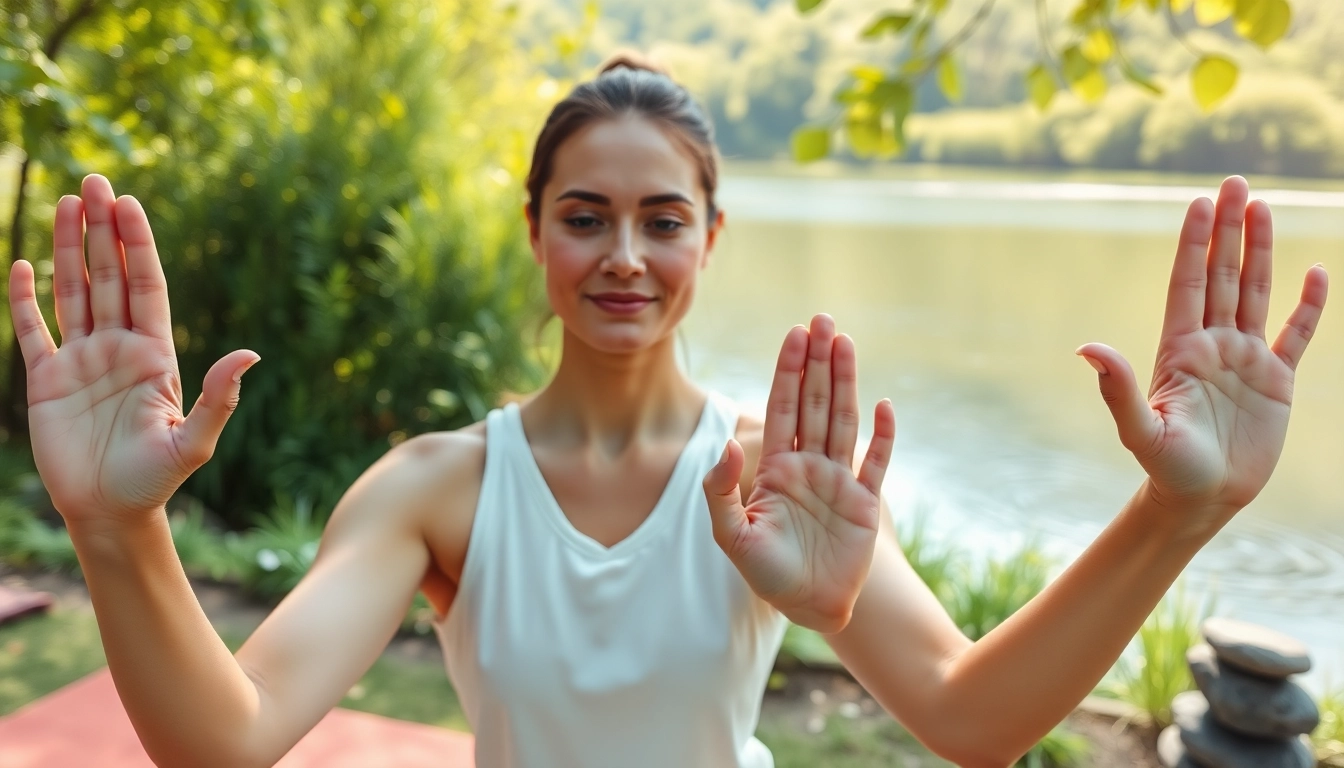Understanding Yoga Mudras: Definitions and Origins
The Meaning of Mudras
Yoga mudras are symbolic gestures, often performed with the hands, that facilitate the flow of energy within the body and enhance the meditative experience. Derived from Sanskrit, the term ‘mudra’ means ‘seal’, ‘gesture’, or ‘mark’. Historically, these hand gestures serve as a means of expressing and channeling the life force, or prana, to promote physical, mental, and spiritual well-being. By incorporating yoga mudras into one’s practice, practitioners can deepen their connection to both their bodies and the universe around them.
Historical Background of Mudras
The practice of mudras can be traced back thousands of years in ancient Indian scriptures and texts like the Vedas, the Upanishads, and the yoga sutras. Depicted in various forms of art, including sculptures and paintings, mudras are often celebrated in Buddhist and Hindu traditions. As yoga evolved, so did the understanding of these powerful gestures, which began to be recognized not only for their aesthetic but also for their profound psychological and physiological effects.
Types of Yoga Mudras
Mudras are generally categorized into specific types based on their purpose and the energy centers they activate. While there are hundreds of mudras, they can be broadly classified into categories such as hand mudras, body mudras, and facial mudras. Hand mudras, which this article will focus on, are typically practiced in conjunction with yoga poses or meditation techniques and aim to enhance the spiritual, energetic, and mental experiences of practitioners.
The Benefits of Practicing Yoga Mudras
Physical Benefits of Yoga Mudras
Incorporating yoga mudras into your routine can yield a multitude of physical benefits. Research suggests that specific mudras can help enhance circulation, relax the nervous system, and improve flexibility. For instance, practicing the Chin Mudra may assist with calming the mind, while the Gyan Mudra is believed to promote better concentration. Whether used individually or in combination with yoga asanas, these hand gestures serve as tools that allow practitioners to harness their body’s potential and promote an overall sense of well-being.
Mental Health Benefits of Yoga Mudras
Mental clarity and emotional well-being are among the primary benefits of practicing yoga mudras. Many individuals who engage in mudra practices report reduced anxiety, improved focus, and enhanced cognitive capabilities. By effectively channeling energy through specific hand positions, practitioners can enter a state of tranquility and mindfulness, making various types of meditation more accessible. For example, the Anjali Mudra, often associated with gratitude and respect, can foster feelings of connection and community, enhancing overall mental wellness.
Spiritual Advantages of Yoga Mudras
On a spiritual level, mudras can deepen one’s connection to self and surroundings. Historically used in rituals and ceremonies, mudras are believed to invoke specific energies and facilitate spiritual awakening. Through consistent practice, individuals can align their energies with higher states of consciousness. Many yogis find that specific mudras unlock profound insights or facilitate a stronger connection to their spiritual path, assisting with meditation and prayer practices.
How to Integrate Yoga Mudras into Your Practice
Easy Yoga Mudras for Beginners
For those new to yoga mudras, starting with simpler gestures like the Gyan Mudra or Anjali Mudra can be a great introduction. The Gyan Mudra involves placing the tip of the thumb and index finger together while keeping the other fingers extended, and it can be performed while seated comfortably. The Anjali Mudra, with hands pressed together at heart center, promotes mindfulness and gratitude. Consider finding a quiet space, sitting comfortably, and incorporating these mudras into your daily routine for just a few minutes to begin experiencing their effects.
Steps to Incorporate Mudras in Meditation
To effectively use yoga mudras in meditation, follow these steps:
- Find a quiet and comfortable space where you can practice without interruptions.
- Choose a mudra based on your intention for that meditation session. For example, use the Chin Mudra to foster calmness.
- Adopt a comfortable seated position with a straight spine. You can sit on the floor or in a chair.
- Place your selected mudra in your lap or at heart center, closing your eyes and taking deep, slow breaths.
- Focus on your breath, allowing the mudra to imbue your practice with intention and energy.
- Gradually increase the duration of your practice, starting with 5-10 minutes and working up to longer sessions as you become more comfortable.
Using Mudras During Asanas
Incorporating mudras into your asana practice can enhance the physical and energetic benefits of yoga poses. For instance, practitioners may use the Prana Mudra, which involves touching the tips of the thumb, ring finger, and little finger together, while performing poses that involve lunging or stretching. This gesture can amplify the flow of prana energy, enhancing physical strength and grounding. Consider integrating specific mudras with corresponding yoga poses to deepen your connection and elevate your practice.
Popular Yoga Mudras and Their Meanings
Chin Mudra: The Gesture of Knowledge
The Chin Mudra, often referred to as the Gesture of Knowledge, is one of the most commonly practiced mudras. By connecting the tips of the thumb and index finger, this mudra symbolizes the union of the individual self with universal consciousness. It is ideal for fostering tranquility and promoting concentration during meditation.
Gyan Mudra: Enhancing Focus and Clarity
Considered the Mudra of Knowledge, the Gyan Mudra is performed by bringing the tip of the index finger to the tip of the thumb. This gesture is believed to stimulate the root chakra and enhance cognitive functions, supporting focus, clarity, and wisdom. It is particularly beneficial for students or individuals engaging in learning.
Anjali Mudra: Symbol of Respect and Gratitude
The Anjali Mudra, where palms are brought together at heart center, signifies respect and gratitude. Frequently used in yoga classes and rituals, this mudra opens the heart and creates a sense of connection. Practicing Anjali Mudra can cultivate a mindset of appreciation and encourage positive energy flow in communal settings.
Common Mistakes and Tips for Effective Yoga Mudra Practice
Avoiding Misalignment in Hand Positions
Misalignment can hinder the effectiveness of mudras. It’s essential to position your fingers correctly, ensuring each gesture is performed as intended. Start by observing your hand placements in the mirror or practicing under the guidance of an experienced yoga instructor to master the proper alignment of mudras.
Staying Present During Practice
Distractions can disrupt the meditative state you’re aiming to achieve with mudras. To foster mindfulness, designate a specific time each day for practice, creating a routine that signals your mind and body that it’s time to focus inward. Practicing in a quiet, serene environment will also help promote presence.
Creating a Sacred Space for Mudra Practice
Establishing a designated space for practicing yoga mudras can be beneficial. This space should be free of distractions and clutter, ideally adorned with elements that inspire peace and calm. Consider incorporating soft lighting or soothing colors, allowing your sacred space to serve as an invitation to delve deeper into your practice. Incorporating elements such as candles, crystals, or images that resonate with your spiritual journey may enhance the experience.



